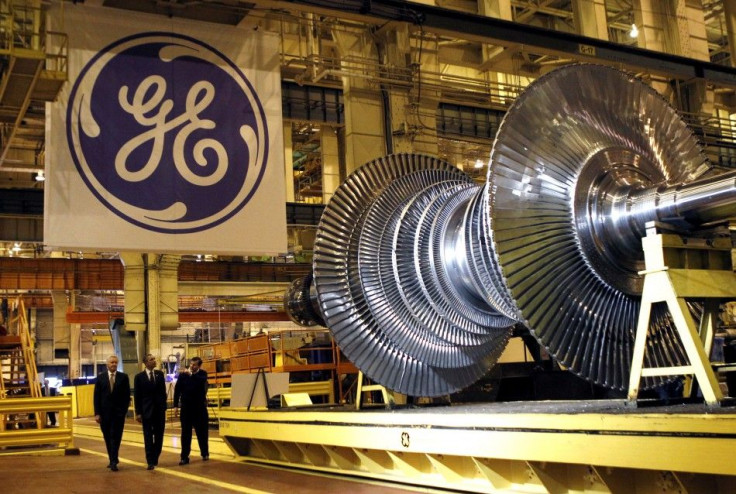US 2Q GDP Revised Up To 1.7%, Stock Futures Point To Slight Gains

The U.S. economy expanded slightly faster than initially thought in the second quarter, but the pace of growth is still too slow to create enough jobs to cut unemployment. Economists are forecasting even slower growth in the second half of 2012, which will probably keep expectations of additional monetary stimulus from the Federal Reserve intact.
Gross domestic product, the value of all goods and services produced, grew at a 1.7 percent annual pace after advancing 2 percent in the first three month of the year, the Commerce Department said in its second estimate, which was released Wednesday. That was up from the 1.5 percent initial estimate and in line with economists' estimates.
The revisions largely reflected higher consumer spending and fewer imports than initially reported.
Consumer spending, which drives more than 70 percent of GDP, rose 1.7 percent instead of a prior reading of 1.5 percent. However, that was still slower than the 2.4 percent pace recorded in the first quarter.
The consumer spending figure largely reflects softness in job creation and stagnant wage growth.
From April through June, the economy produced an average of just 75,000 jobs a month, the weakest three months since August through October 2010. While July's jobs report came in higher than expected and at the highest level in five months, but the unemployment rate rose to 8.3 percent from 8.2 percent in June.
Imports rose just 2.9 percent, compared with an initial estimate of 6.0 percent.
Real disposable income was revised down a tad to 3.1 percent in the second quarter and the personal savings rate was unchanged at 4.0 percent.
A key measure of inflation, the personal consumption expenditure price index, was revised up slightly to 1.7 percent. Excluding food and energy, the index was unchanged at 1.8 percent.
In the corporate sector, after-tax profits unexpectedly rose 1.1 percent rate after sinking 8.6 percent in the first quarter.
The report also showed that private-sector investment was revised down to a 3.0 percent increase from 8.5 percent, largely because of fewer sales of computers and software.
The decline in government spending in the second quarter, meanwhile, was not as deep as previously reported. Government spending dropped 0.9 percent in the second quarter, instead of 1.4 percent.
For the third year in a row, macroeconomic data have rebounded in the winter and spring, only to be shocked into submission by the summer.
In 2010, it was the onset of the European fiscal and banking crises along with concerns about U.S. fiscal and regulatory policy that weighed on growth in the summer.
In 2011, these were joined by an oil shock, natural disasters in Japan, and the U.S. debt downgrade.
This year, the list of shocks is even longer: the European crisis, a payback for mild winter weather, a slowdown in China, Mideast geopolitical tensions, and the looming U.S. fiscal cliff are all undercutting confidence and growth.
"The US economy is weak and likely to weaken further," Ethan Harris, North American economist at Bank of America Merrill Lynch, wrote in a report.
Harris forecasts the U.S. economy will only expand 1.6 percent in the third quarter and he expects growth to slow further in the last three months as the uncertainty shock from Europe and the U.S. fiscal cliff builds.
In contrast, the Fed's own forecasts imply between 2.1 percent and 3.1 percent growth in the second half of this year.
"These are primed for downward revisions at September Federal Open Market Committee meeting," Harris said.
Stock index futures point to slight gains at the open on Wednesday. The S&P 500 futures added 1 point, the Dow Jones Industrial Average futures rose 15 points and the Nasdaq 100 futures rose 1 point.
This will likely be a third day of limited action in the stock market as investors looked ahead to Federal Reserve Chairman Ben Bernanke's speech on Friday for trading incentives.
Market expectations about near-term Fed easing seem to be quite high going into the meeting. According to Bank of America Rates Strategists Priya Misra's estimates, the bond market is pricing in about an 80 percent chance of QE at one of the next several meetings.
Bank of America's U.S. equity strategist Savita Subramanian is also concerned about excessive optimism in the stock market. Stocks are more than 10 percent above their early June lows, despite generally disappointing data.
However, Bernanke is probably not ready to pre-announce a third round of quantitative easing, or QE3. Hence his remarks could disappoint the markets.
© Copyright IBTimes 2024. All rights reserved.












